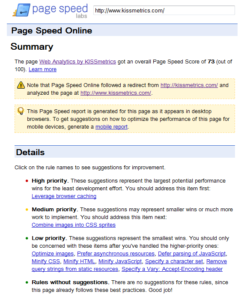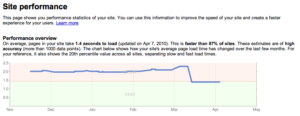Surveys conducted by Gomez.com and Akamai reveal that website visitors expect a site to load in about two seconds, and if a site does not load within three seconds, they abandon it. Even online shoppers like e-commerce sites that load quickly. In fact, 79% stated that they will not return to a site if it takes long to load while 44% online shopper said that they would share with friends about the poor online shopping experience. So, if you think website speed has nothing to do with your SEO and local search SEO, think again.
Your website loading speed should be part of your SEO strategy because a slow-loading website fails to convert visitors into leads. Also, based on surveys, the poor experience will be narrated to family and friends, resulting in your potential loss of sale because your site took a few seconds more than your competition to load.
So, how do you test the speed of your website as a part of your SEO plan? And, what measures can you take if your site is not loading quickly enough for Google?
Testing Website Speed for Google
If you want to conduct a website speed test for Google, there are a number of options available for you. Here are some of them that you can use to find out the speed of your site and then remedial measures:
Page Speed Online:
This is a website speed test tool introduced by Google. You can use this tool as a Chrome extension or web-based, depending on what you prefer. Using this tool gives you insight into high, medium and low priority suggestions. If you don’t have the technical knowledge, you may wonder what to do. Hence, it is best to get a website developer to work with you to understand the technicalities involved, and how many of the suggestions are apt for your website.

Google Webmaster Tools:
While Google has stated that speed of loading does not carry as much weight as the quality and relevance of the content, you definitely don’t want to ignore the loading speed. Google Webmaster Tools allow you to perform a website speed test and get to know the speed visitors from across the world experience when they click on your link. The speed is shown to you in the form of a graph.

The good thing about Google Webmaster Tools is that you can get month wise site loading time and this allows you to compare and analyze to get the bigger picture.
Decreasing Webpage Load Time
After conducting website speed test for Google, it is time to take the necessary steps to shorten the loading time. You can use the following tips to reduce the loading time by a few seconds:
GZIP Compression:
Get in touch with your hosting service to find out whether they use GZIP compression on their servers. This compression can reduce any file size by a massive 70% without deteriorating the quality of the site and images and videos on the site.
CSS Sprites:
This is a technology that has the ability to transform multiple images into one single image. When you have one image loading, there is no need for simultaneous connections. As a result, it helps the site load quicker.
Javascript and Stylesheets:
Do not cramp Javascript and CSS into every single web page. Get them to load in external files so that the visitor’s browser has to load it just once rather than each time they browse through your site. However, you should not place the Javascript separately as a tag is it has load towards the top of the page to display names or load the image carousel.
Optimize Images:
This should be a part of your SEO without even thinking twice about it. You can use the option Save for Web in Photoshop and Fireworks to significantly reduce the size of the image. Use an image quality slide to check out how size reduction affects crispness of the image.
Caching System:
If you cache the webpages, your site will load much faster. In WordPress, you can use plugins like Super Cache that can minimize page loading time by quite a bit.
Use 301 Redirects Judiciously:
When you are changing the structure of your website, 301 redirect is the most commonly used redirect to ensure you don’t lose traffic from search engines. However, if you have too many 301 redirects, it confuses the browser and causing it to load the web page slowly.
Content Delivery Network:
This is best for popular sites that are loading slowly. Using a content delivery network such as Amazon CloudFront allows you to serve web pages based on the location of the website visitor, ensuring that the site load quicker.
Make sure you also conduct a mobile website speed test to figure out how quickly your site loads on handheld devices. This is necessary in today’s world for local SEO, with smartphone users using local search to find what they need while they are on the go.
The Bottom Line
While loading speed may not impact your search engine ranking, it will prevent you from converting leads. Hence, conduct website and mobile website speed test and make sure your SEO plan takes into account the loading speed to ensure your users enjoy a satisfying user experience.














Pingback: Understanding Googlebot Technology to Reap SEO Benefits()